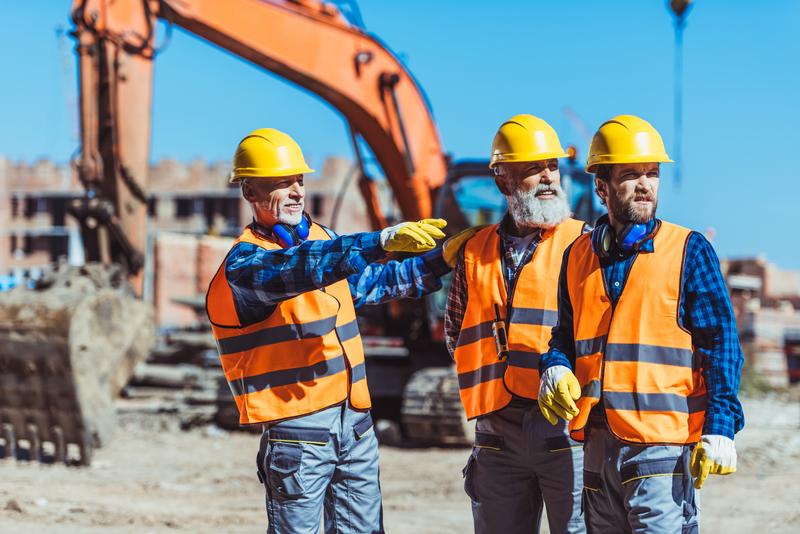
by Pride One Staff | Jun 8, 2020 | Construction Safety
Working with heavy machinery can be dangerous. The machinery is heavy, bulky, and has many parts and pieces that are dangerous to people. This is why it’s important to maintain worksite safety around heavy machinery. Accidents can and do happen, but many accidents are completely preventable. Here are some things that you can do to keep your worksite and your workers safe while working with heavy machinery.
Hire Licensed Operators
One of the things that you can do is hire licensed operators. For heavy equipment machinery, the law requires operators to hold a commercial driver’s license (CDL) which requires heavy machine operators to complete a course. Once completed, they then have the license to maintain and operate heavy machinery. While mistakes can still happen, a licensed operator is typically safer because they have had the prior training to know how to use the heavy equipment. They adhere to strict guidelines to keep themselves and others safe.
Establish Clear Procedures
For all of your employees, whether they operate on the machines or not, you want to establish clear procedures. Certain situations require lockout/tagout procedures to ensure worker safety. These procedures should be easy to understand by all employees so that they understand the risk the machinery poses and how to avoid injuring themselves or others. For example, establish a procedure for entering and exiting a heavy equipment vehicle. Falls are one of the most common accidents in the workforce, and a simple procedure established can help reduce the risk of an accident.
Teach Employees to Be Cautious
Clear procedures can help maintain safety, but an equally important step is to teach your employees what the hazards are and how to avoid them. Knowing the hazards and exercising caution around them can save the lives of your workers. For example, many heavy equipment vehicles have blind spots. A particularly risky movement operators of heavy equipment vehicles make sometimes is backing up. This is dangerous because it’s practically impossible to see anyone who’s behind the vehicle. Even if a driver has a window to see behind them, sometimes dirt and debris can fall and block that window, making it much more difficult to see. Teach your employees to exercise caution and common sense around the heavy machinery.
Worksites with heavy machinery are hazardous, but you and your employees can be safe. Following guidelines will help you reduce accidents and make your worksite safer for future employees.
If you’re planning on building a new commercial facility, contact us to learn more about how we can help fulfill your construction needs.
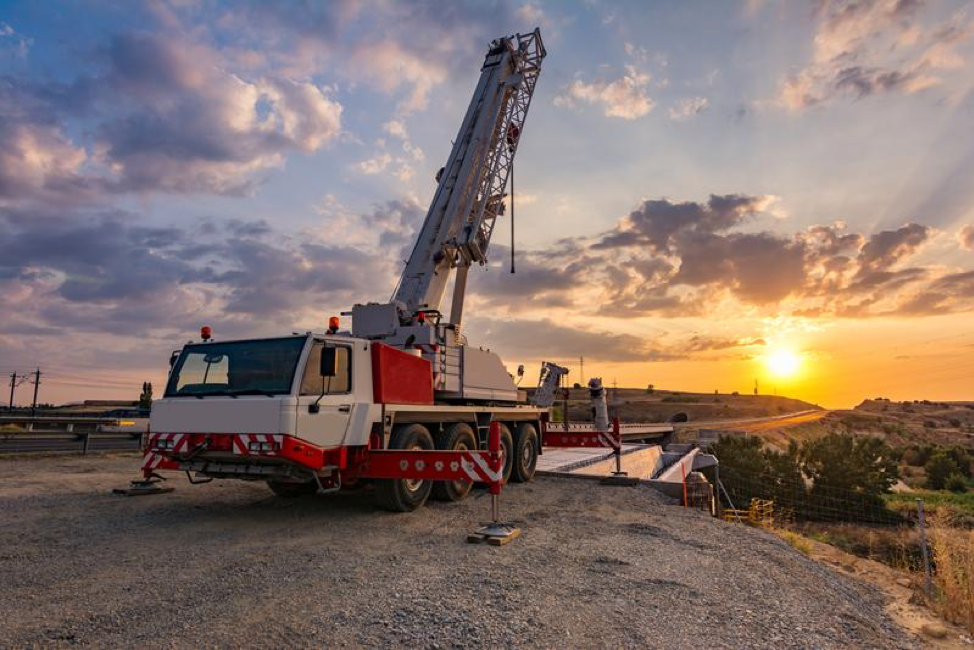
by Damien Therrio | Sep 11, 2019 | Construction Safety
Cranes are an essential part of the modern building and development scene. Unfortunately, improper use of cranes can lead to problems and result in severe injury or even a workplace fatality. For this reason, it is important to be aware of hazards and best practices. It’s also essential to know how to react in the event of an accident.
Crane Hazards
Being aware of crane hazards reduces the risk of potential danger in the workplace. Some common crane hazards include electrical hazards, materials falling, overloading a crane, crane movement (pinch points) and dropped loads. Operators, foremen and other adjacent site workers should all be aware of an operating crane. Supervisors and operators especially are responsible for everyone else on the site and must continually assess the safety of the crane operation and take every precaution available to protect against potential hazards.
What to Do If an Accident Occurs
If an accident does occur, there are immediate steps to take. Supervisors should quickly determine what type of accident occurred and whether there is an ongoing danger, such as live wires or potential structural collapse from a crane impact. If there are no immediate secondary problems, first aid should be applied to any victims as rapidly as possible. There should always be first-aid trained staff members on-site to provide immediate assistance. Alerting authorities, such as EMT, fire or police crews, should be done quickly. Then, attend to secondary needs, such as contacting the local electric company, as needed. Finally, filling out the proper legal documentation is important for all parties.
Best Practices
Accidents are often the result of improper procedures or a lack of attention to detail. In some countries, governmental organizations, such as OSHA in the United States, provide guidelines and recommendations. Only a trained and certified operator should actually operate the crane. Cranes should always be inspected before every use for damage or signs of problems. Cranes must be used only on level surfaces and have outrigger arms deployed for balance. The path, or swing, of the boom and load should be assessed for wires, structures or pathing over workers, and workers should never be under a load. Loads should always be inspected for weight and balance.
All heavy machinery carries inherent risks. There is no good workplace accident, especially when such machines are in use. It is only through careful risk assessment and following rules and best practices that cranes can be used in a safe manner.
Commercial construction is our business, so let us help you build your next location!
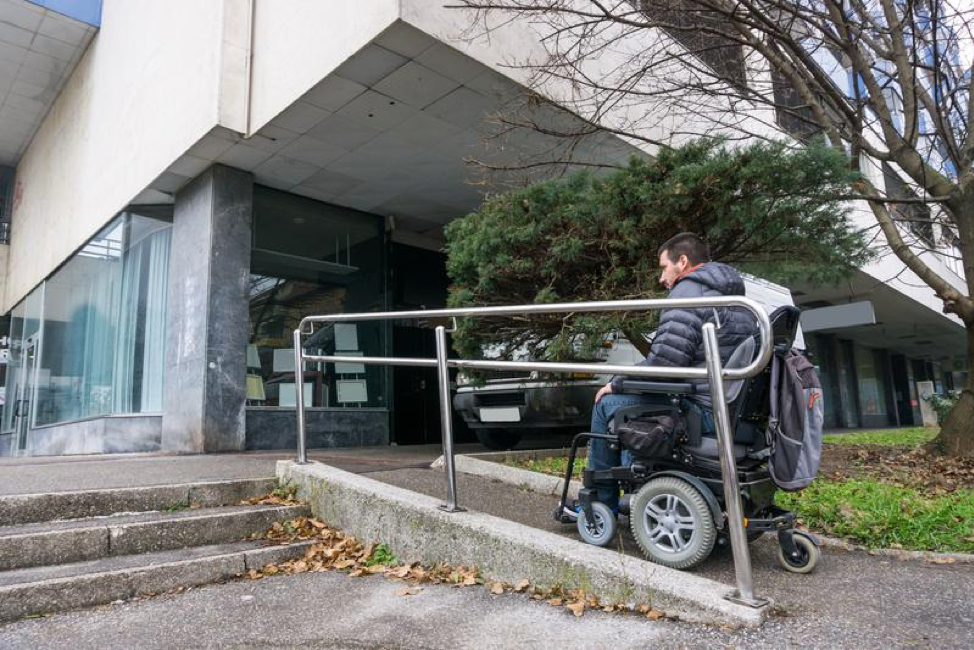
by Damien Therrio | Sep 5, 2019 | Construction Safety
Accessibility is becoming more and more of a topic of conversation lately, one of the main targets being the lack of accessibility for disabled people in everyday life. Few or no ramps, elevator malfunctions making whole buildings off-limits to certain people, and unfriendly sensory environments make whole swathes of society a bad place to be if you’re disabled. The only way to change this is by choice, so here are three arguments for a person who is in design to build more accessible structures.
Create a More Equal Society
For anyone with even a cursory commitment to leaving positive change behind in the world, striving for accessibility in design is one of the best ways construction and architecture jobs can do it. Accessibility features exist to help level the playing field for disabled people. You wouldn’t expect someone in a wheelchair to climb ten stories’ worth of stairs, yet no one really pays any mind to the requirements for elevators, ramps and similar accessibility structures. What’s worse, these features are often limited, forcing people to compete over resources, oftentimes with individuals who don’t actually need them and just enjoy the convenience, such as abled people using a limited number of elevators and forcing others out. Without actively thinking about these things during design, society will remain fundamentally unequal.
Source: What is the Difference Between Accessible, Usable, and Universal Design? | University of Washington
It’s the Law
Perhaps the most convincing argument for accessible design is that, in the simplest terms, it’s the law. Public structures are required to have certain accessibility features and considerations or face various consequences. Even so, many places neglect even this bare minimum. Take it as a personal challenge to surpass this extremely low bar if you have to, but work accessibility into your designs for the sake of not being hit with fines.
Source: Opening Doors to Everyone | ADA National Network
How to Make Commercial Designs More Accessible
Like with most things, the people who are actually affected by an issue usually have a pretty good idea or some suggestions on how to solve it. In that spirit, it’s crucial to consult with disabled people when you plan accessible structures. Consulting someone who is actually wheelchair-bound can be incredibly helpful because they can point out potential problems that you wouldn’t spot otherwise. Getting the opinions of individuals who use canes or crutches about building layout is also important. After all, it would be an incredible waste of time and resources to get to the construction stage only to realize that everything you’ve planned just isn’t feasible in reality.
Source: Does Your Workplace Meet Basic Wheelchair Accessibility Standards? 6 Questions to Ask | Instructure
Not being able to get somewhere just because you’re disabled can be a frustrating situation for many people. There are a lot of ways accessibility can be improved in society to make it a more friendly place. Consider these three points the next time you’re drafting or designing structures.
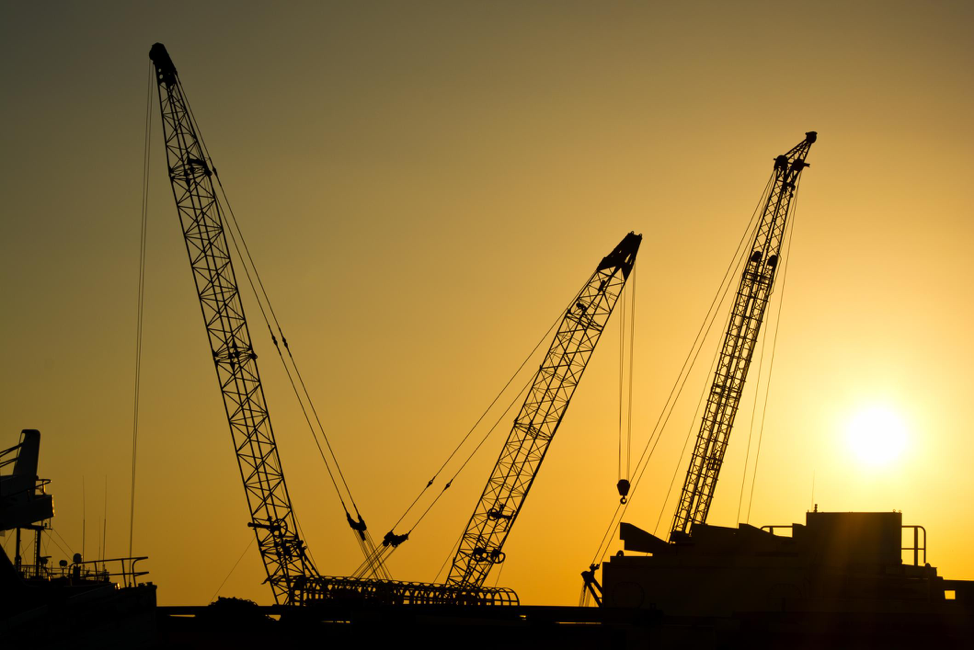
by Damien Therrio | May 2, 2019 | Construction Safety
Cranes are the muscle in most industrial and construction environments. They are essential to lifting most heavy objects. To the people that operate and work around them, cranes are a normal piece of equipment for the workplace. For this reason, sometimes the dangers they pose are taken for granted. It is of extreme importance to follow all safety precautions when using cranes to prevent serious injury or death. This article will discuss some critical crane safety tips that will help you to avoid a catastrophic accident in your work area.
Do a Safety Inspection
It is very important to thoroughly inspect the crane before operating it. The inspection should be based on the manufacturer’s guidelines and any other criteria your workplace may have established. This may seem obvious, but some people assume that the equipment is ok because they were the last person to operate it. Also, sometimes to save time or stay on schedule a crane inspection may be skipped. If there is any question about the serviceability of the crane, it should not be operated. It is also important to ensure that the crane can handle the load that it will be lifting.
Be Aware of the Ground and What’s Underneath
Cranes are extremely heavy pieces of machinery that can easily damage the ground, piping, and utilities beneath it. This could create a dangerous situation, especially for power and gas lines. An ideal solution for this problem is the use of wooden mats. Woods such as oak or other hardwood are ideal for mats that can mitigate the impact a crane’s weight has on the ground below.
Get the Proper Operation Certifications
Cranes are complex pieces of machinery that require specialized training and certifications to operate. The operator must know the equipment very well to include emergency safety procedures. In addition, the operator should be well-versed in the use of crane hand signals.
In closing, a crane is a vital piece of machinery for many industries. It is responsible for lifting a wide variety of heavy loads. Because it is a normal piece of equipment in many workplaces, it can sometimes be taken for granted. It is absolutely critical to always make safety a priority when you are operating a crane. This can help prevent serious injury or death. It is also important to ensure all operators are qualified to operate the machinery.
If you’re planning an industrial, business, or other major construction project, let Pride One Construction help!
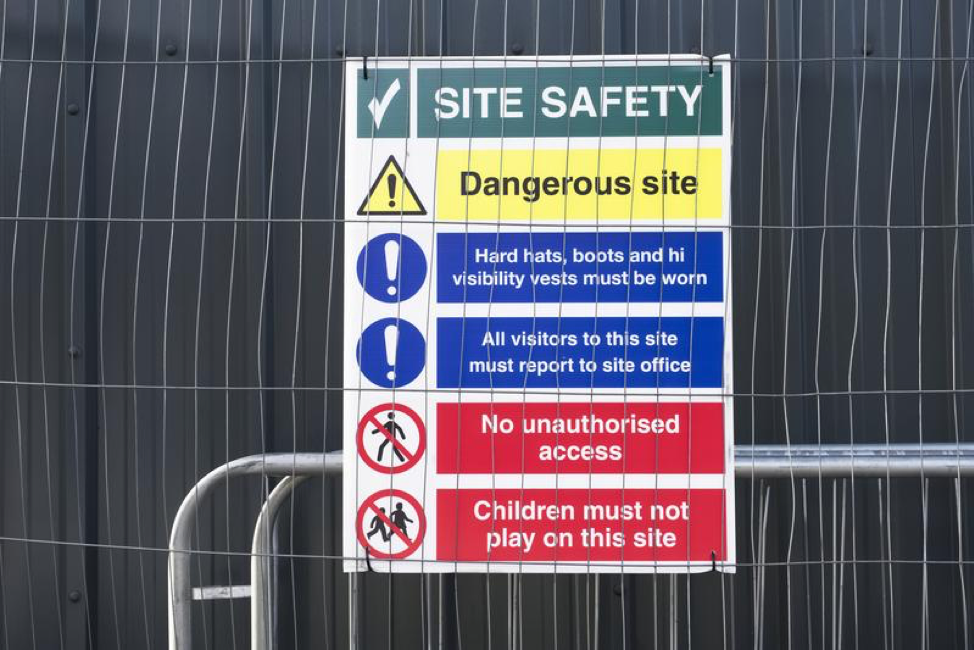
by Damien Therrio | Jan 21, 2019 | Construction Safety
When your worksite is dangerous, it subjects you to many different risks. Aside from the jeopardy in which your workers’ lives are placed, there may also be a legal risk for your business. Some of this danger can be averted if you properly label the things at your worksite that can potentially be harmful.
Pipes
Pipes are something that can cause major damage if handled the wrong way. Given that they carry water as well as other possibly hazardous substances, all it takes is one mistake and you could be facing a world of legal liability. Safety Blog News explains, “if a worker bursts a water pipe, that water could cause damage to areas beyond your worksite. In addition, depending on what is in the pipe, it can injure your workers too. Workers should know exactly what is in each pipe so they know where they need to exercise extra caution. This is done through marking the pipes and keeping a schematic of where the pipes are when they are hidden behind walls.”
Color Code Wires
Electrical wiring can be extremely dangerous for obvious reasons. Worksite fires are a leading cause of death and injury on the job. Therefore, it is a good idea to color code the electrical wires. According to Creative Safety Supply, “placing warning signs anywhere that someone might interact with electrical wires, especially high-voltage wires, is another good idea for improving overall safety. These signs can serve as a good reminder to those in the area that there are dangerous wires present. There are many signs that can be used depending on the specific situation.”
Chemicals
Chemicals have the capability to cause severe damage to your employees as well as surrounding areas. Workers need to know where chemicals may possibly be stored in order to avoid coming into contact with them or releasing them into the surrounding area. Cabinets that keep chemicals should have the proper labeling on the outside and access to all the required Hazmat information in easy access. Many keep this information on a binder that is attached to the outside of the cabinet with a cable. Beyond sparing yourself from liability, there are OSHA rules that require you to ensure that chemicals are clearly marked. According to Safety Info, “employees have a right to know what chemicals they are around when they are on the job. They should also be informed on the proper storage and usage of the chemicals they work around. If chemicals are not properly labeled, you can face fines from OSHA.”
Steep Drops
Falls are one of the leading causes of injuries on a worksite. Workers may not have the best visibility on the job site and that can lead to a dangerous fall. If there is an area where workers may not have the best footing or there is a drop that is near them, it should be clearly marked and labeled. In addition, oily surfaces should be marked to alert your workers. When possible, grating or other anti-slip flooring can help to avoid accidents. Finally, any kind of hole or opening that workers could fall into should be clearly labeled in order to let workers know of the opening.
Worksite safety should be a serious concern on any job. You can never take too many precautions in order to help keep your workers out of harm’s way. By clearly marking and labeling items and chemicals that can cause a potential danger, you take a sizable first step towards protecting your workers.
If you’re looking for construction management and work that you can rely on, then keep Pride One in mind. We have construction services for the commercial, hotel, health care, industrial, and apartment industry. Get in contact with us for your next big construction project!
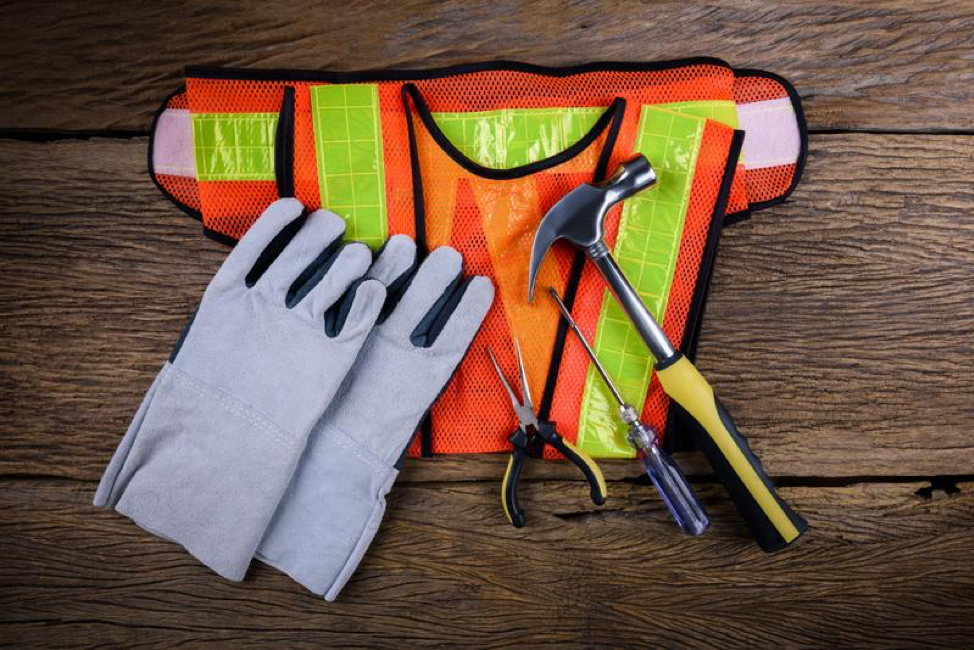
by Damien Therrio | Oct 1, 2018 | Construction Safety
Workplace accidents make up a large portion of personal injury incidents, and the construction industry is one of the most affected. Individuals working on building sites are exposed to a range of risks from falls to machine injuries. Construction companies, project leaders and contractors who are responsible for work sites should prioritize the safety of workers and everyone who has access to the sites. The industry has various health and safety standards that are designed to protect workers. A comprehensive safety management system will incorporate these regulations with other site-specific protection measures. Implementing strategies for a safer workplace, however, is not always easy and it helps to have a guideline.
How to Put a Safety System in Place
Developing an action plan is the first step toward transitioning into a safer work environment. Although some health and safety measures may be standard across the sector, an employer has to consider the specific threats in a particular setting. For this reason, a thorough assessment is required to identify the risks that employees and non-employees have to deal with. Understanding the hazards makes it easier for a company to come up with a safety plan that addresses them. A safety plan includes protocols that eliminate or control the risks that people are exposed to, these can include additional training, clear safety policies, and even safety and warning labels.
More: DIY Workplace Labels | Creative Safety Publishing
After creating a blueprint for the identified safety risks, an employer must then develop policies, procedures, and processes for the activities that demand a safety system of work. At this stage, a company must lay out the recommended safety behaviors for workers, the expectations of the employer, and incident reporting. When creating safety policies, one must factor in the equipment used, the location of certain activities, and the task itself. For example, if the task involves working from top heights, then the safety processes should include fall protection and the use of fall arrest systems.
More: What Safety Equipment Do Construction Workers Need? | Alabama Pipe Welders Academy
The third part of implementing a safety strategy is training. Regardless of the level of risk that employees and non-employers face, everyone should be well educated on how to minimize or eradicate hazards. A company must implement a safety training system so that people can learn about the general rules of the enterprise. They must also train on the work rules for a specific environment and the location. Different activities will carry varying levels of risk, and that will determine the content and depth of the training program. Proper training ensures that individuals not only know how to avoid accidents but also to respond appropriately when something happens.
More: WHS Management System | Occupational Safety Solutions
Monitoring and Reporting are critical parts of transitioning into a safer work setting. It is not enough to identify the risk and set protection measures. Employers must keep an eye on the safety systems in place. In some work environments, risks can evolve as a construction project advances, and that means the safety standards may have to change as well. Monitoring safety systems ensures that they are being followed. Reporting allows a company to know the state of safety systems and if they are working.
Why Safety Systems are Necessary
Some small businesses lag behind in forming and executing safety systems because they fail to grasp their importance. The most obvious reason for a safe work environment is to reduce the risk of injury.
Construction sites have various hazards that can cause serious and sometimes fatal harm. Falls are some of the most common threats. When workers are operating from high positions, there is always the dangers of falling if the right protection measures are no provided. Falls also result from tripping over materials scattered around a site and malfunctioning equipment like cranes and elevators. The use of heavy machinery can also cause severe injuries particularly if operators are not well trained. Collapsing materials are hazardous as well because they can land on people on the ground.
More: Safe Systems of Work | Health and Safety Authority
The legal implications of failing to institute an actionable safety plan can be devastating for an employer. A good number of personal injury lawsuits stem from workplace accidents. If an employee or non-employers suffers injuries or other damages on a construction site because the responsible parties did not set up the necessary protections, then the victim may sue. Employees or customers who have wrongfully experienced an injury on the job will have the right to pursue compensation, and might do so regardless of the fees and charges that personal injury lawyers charge. Legal troubles can cripple a business or individual financially, not to mention the ruin caused to the reputation. A workplace with poor safety will also be very expensive to insure. Enacting policies to protect workers can bring down a contractor’s insurance premiums considerably.
More: How to Find a Personal Injury Lawyer | Albert E. Hirst
Construction companies, contractors and other players in the building industry must give workplace safety the attention it demands. Employers and employees must understand the responsibility they hold in ensuring a safe working environment. A company must create an effective safety plan and know how to implement all its tenets to benefit everyone involved.
If you’re looking for any sort of construction, whether it be commercial, hotel, industrial or otherwise, we’d love to be in contact with you and see how we can help!







Recent Comments